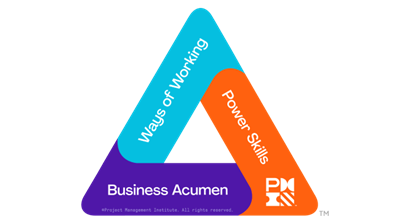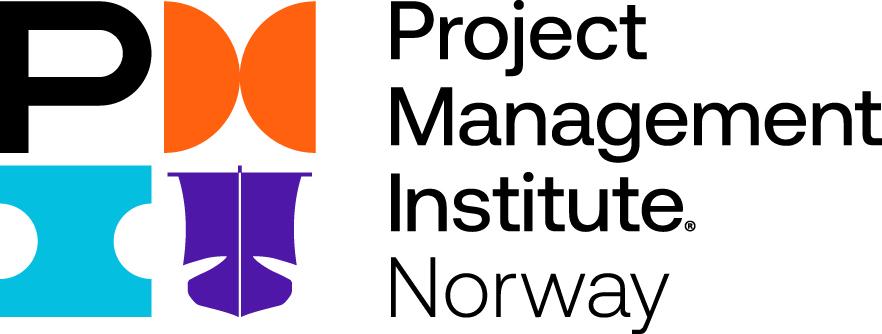May 28 2025 at 06:00AM
Navigating Complexity and Building Resilience: A Practical Guide for Project Managers
In today's fast-paced and unpredictable business world, complexity isn't just a challenge — it's the new normal. Project managers often find themselves at the forefront of navigating this complex landscape, balancing ever-changing demands, diverse stakeholder needs, and uncertain environments. But with complexity also comes opportunity. As Albert Einstein famously said,
“In the middle of difficulty lies opportunity.”
This article aims to equip project managers with practical insights and strategies to not only manage complexity but to use it as a competitive advantage by building resilience and fostering agility within their teams and organizations.

Image credit: Freepik
Understanding Project Complexity
Complexity in projects often arises from unclear goals, changing requirements, diverse stakeholder expectations, and unexpected problems. According to PMI's Navigating Complexity Practice Guide, the main sources of complexity in projects are ambiguity and multiple stakeholders. Ambiguity refers to unclear or incomplete information regarding project features, resources, phases, and desired outcomes. For example, stakeholders might not clearly express their requirements at the beginning, leading to confusion and uncertainty throughout the project lifecycle.
Multiple stakeholders often add complexity because they have different priorities, interests, and ways of communicating. Each stakeholder group might have its own expectations and requirements, which can sometimes conflict. This often leads to additional meetings, negotiations, and changes in project scope.

Image credit: Freepik
When these complexities are not managed effectively, they commonly result in project delays, increased costs, and scope creep — where the project's objectives become unclear or expand unexpectedly. Early recognition and proactive management of these complexities are crucial to ensuring project success.
To effectively handle complexity, project managers must continuously clarify project goals, maintain open communication with stakeholders, and use structured approaches like risk management and agile methodologies to adapt to changes efficiently. By addressing these complexities early and clearly, project managers can significantly increase the likelihood of project success.
How to Build Resiliency
Resilience enables project managers to not only manage complexity but use it as an advantage. According to PMI's Disciplined Agile framework, building resilience involves continuously adapting and proactively managing changes. Project managers need to create a supportive organizational culture that prioritizes executive sponsorship and strategic alignment. Organizations perform best when talent management is strategically aligned with organizational goals, emphasizing leadership development and continuously matching the right skills with the right projects.
To further enhance resilience, PMI emphasizes developing competencies across three areas defined in the PMI Talent Triangle®:

Image credit: PMI
- Ways of Working: Adapt and apply various project management methodologies (such as agile, predictive, or hybrid) to effectively respond to uncertainty and complexity.
- Power Skills: Leverage interpersonal skills like communication, emotional intelligence, and negotiation to manage diverse stakeholder relationships and foster collaboration.
- Business Acumen: Understand and align project outcomes with broader business strategies, helping to make informed decisions and strategically navigate market dynamics.
Additionally, effective communication is vital to building resiliency. Clear, inclusive, and consistent communication helps minimize misunderstandings, manage expectations, and promote teamwork, significantly contributing to the success of complex projects.
Five Key Strategies for Project Managers to Tackle Complexity
Managing complexity requires more than just following established procedures. It involves responding thoughtfully to change, anticipating roadblocks, and helping teams stay focused and resilient. Project managers who apply targeted strategies — backed by preparation and adaptability—are better equipped to handle the pressure and pace of complex initiatives. The following five strategies offer structured approaches, each supported by a real-life example that demonstrates how resilience transforms challenges into opportunities:
- Lead with Adaptability: Adaptability is the ability to stay calm and shift direction quickly when circumstances change. A resilient leader uses this skill to reframe challenges and keep the team moving forward, even when the path becomes unclear.
Example: During a citywide infrastructure upgrade, unexpected delays in permit approvals threatened the entire project timeline. The project manager adjusted construction sequencing and shifted crews to unaffected sites, maintaining momentum while waiting for clearances. This flexible approach kept the project on track and avoided penalties.

Image credit: PMI
- Engage Stakeholders Proactively: Managing stakeholder expectations is key to reducing complexity. Proactive engagement builds trust, encourages collaboration, and reduces resistance to change. It ensures decisions are made with alignment and shared understanding.
Example: A software rollout in a university faced tension between IT staff and academic departments. The project manager organized joint planning sessions and co-created a phased implementation timeline, ensuring both technical feasibility and academic needs were addressed. This inclusive approach minimized pushback and smoothed implementation.

Image credit: PMI
- Communicate with Clarity and Frequency: Clear and timely communication prevents confusion, especially in uncertain or changing situations. It ensures all parties understand the project goals, progress, and any emerging risks or changes.
Example: In an HR system migration, shifting vendor requirements caused repeated scope adjustments. The project manager introduced biweekly updates using simplified reports and visual aids, helping internal stakeholders stay aligned and make timely decisions despite the changing environment.
- Use Agile Methodologies to Stay Flexible: Agile approaches empower teams to iterate quickly and respond to changing requirements. By breaking work into manageable cycles, project managers can course-correct before issues grow.
Example: A marketing team launching a regional campaign had to adjust their strategy due to sudden competitor activity. Using agile sprints, the team was able to test new messaging weekly, gather feedback, and pivot their approach quickly — ultimately achieving higher engagement.

Image credit: PMI
- Build Team Readiness Through Training: Complex projects require teams with the skills and confidence to face new challenges. Ongoing training prepares team members to adopt new tools, adapt to change, and work more effectively together.
Example: An e-commerce company implementing a new warehouse management system faced pushback from operations staff. The project manager launched hands-on training and mentoring, allowing employees to learn the system in stages. This proactive investment in readiness reduced errors and sped up adoption.
These strategies show that resilient project managers not only respond to challenges but also prepare their teams and processes to thrive in complex environments.
Final Reflections: Turning Complexity into an Advantage
As complexity grows, project managers who focus on resilience and agile leadership can turn potential challenges into opportunities. Navigating this evolving landscape requires more than reactive problem-solving—it demands foresight, adaptability, and a culture that embraces continuous learning. Organizations that invest in these qualities, and in developing leaders who model them, position themselves to outpace disruption and drive innovation.
Resilience is not a one-time fix but a long-term capability that strengthens over time. It is cultivated through intentional strategy, empowered teams, and supportive leadership. When project managers are equipped with the right tools, mindset, and support, they can create clarity out of ambiguity, alignment out of divergence, and progress out of complexity.
In an increasingly interconnected world, where change is constant and uncertainty is inevitable, the ability to manage complexity isn’t just an advantage—it’s a strategic imperative. By applying the principles and strategies outlined in this guide, project managers can not only ensure success in their current projects but also help future-proof their organizations.
References:
- PMI Naviagate Complexity Practice Guide
- PMI Disciplined Agile: Navigating the VUCA Environment
- PMI Learning Library: Key Competencies for Navigating Complexity
- PMI Talent Triangle Resource



